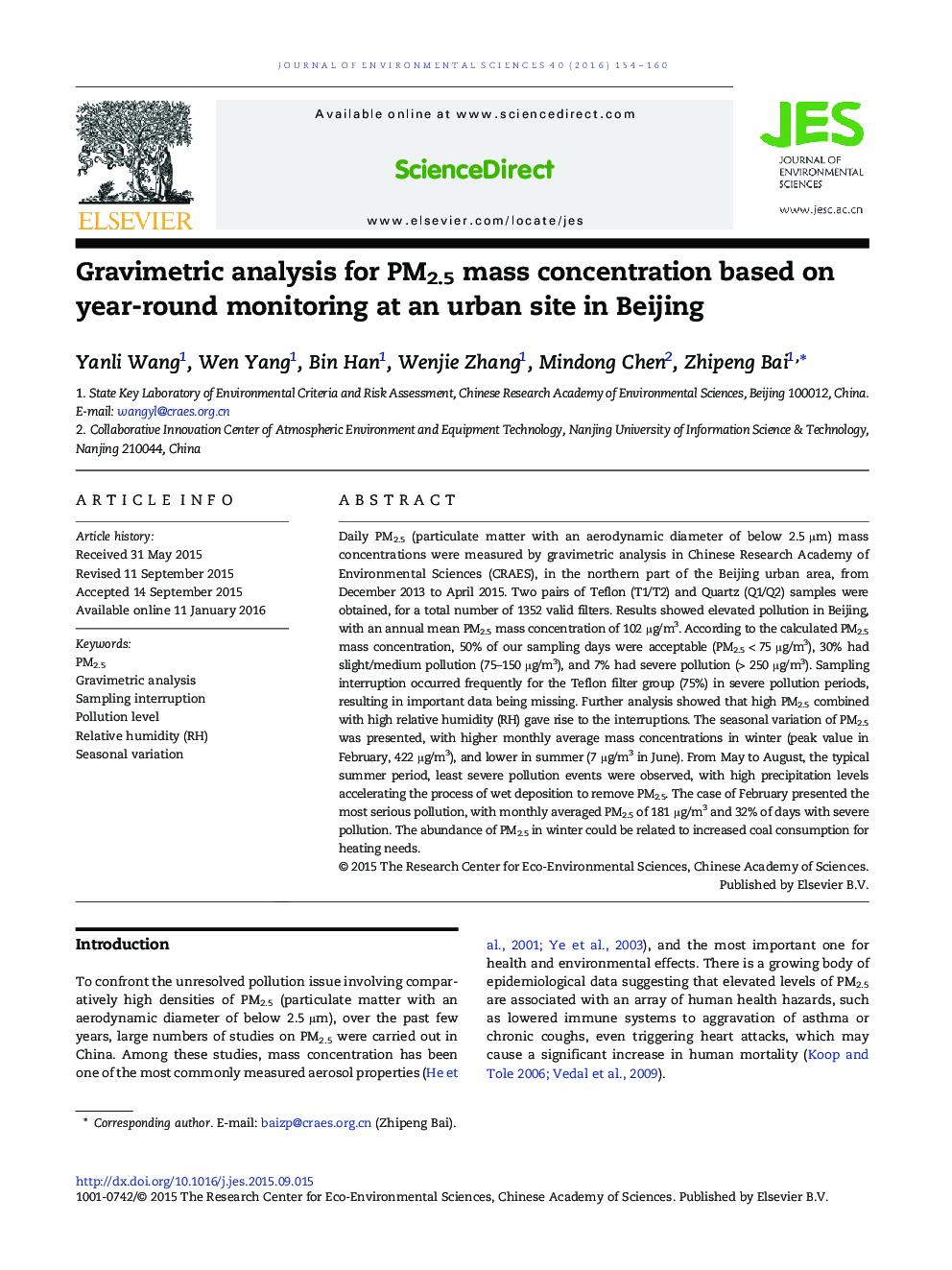| Article ID | Journal | Published Year | Pages | File Type |
|---|---|---|---|---|
| 4453836 | Journal of Environmental Sciences | 2016 | 7 Pages |
Daily PM2.5 (particulate matter with an aerodynamic diameter of below 2.5 μm) mass concentrations were measured by gravimetric analysis in Chinese Research Academy of Environmental Sciences (CRAES), in the northern part of the Beijing urban area, from December 2013 to April 2015. Two pairs of Teflon (T1/T2) and Quartz (Q1/Q2) samples were obtained, for a total number of 1352 valid filters. Results showed elevated pollution in Beijing, with an annual mean PM2.5 mass concentration of 102 μg/m3. According to the calculated PM2.5 mass concentration, 50% of our sampling days were acceptable (PM2.5 < 75 μg/m3), 30% had slight/medium pollution (75–150 μg/m3), and 7% had severe pollution (> 250 μg/m3). Sampling interruption occurred frequently for the Teflon filter group (75%) in severe pollution periods, resulting in important data being missing. Further analysis showed that high PM2.5 combined with high relative humidity (RH) gave rise to the interruptions. The seasonal variation of PM2.5 was presented, with higher monthly average mass concentrations in winter (peak value in February, 422 μg/m3), and lower in summer (7 μg/m3 in June). From May to August, the typical summer period, least severe pollution events were observed, with high precipitation levels accelerating the process of wet deposition to remove PM2.5. The case of February presented the most serious pollution, with monthly averaged PM2.5 of 181 μg/m3 and 32% of days with severe pollution. The abundance of PM2.5 in winter could be related to increased coal consumption for heating needs.
Graphical abstractFigure optionsDownload full-size imageDownload as PowerPoint slide
